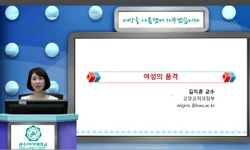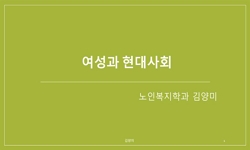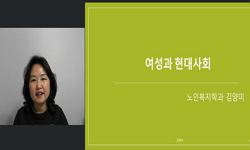본 연구는 연구자 자신의 삶을 되돌아보며 어떠한 경험을 하고 그 경험의 의미는 무엇인지에 대해 탐구하고자 하였다. 이 연구는 여성 수필가의 경험 속에서 나타나는 삶의 의미를 탐구하고...
http://chineseinput.net/에서 pinyin(병음)방식으로 중국어를 변환할 수 있습니다.
변환된 중국어를 복사하여 사용하시면 됩니다.
- 中文 을 입력하시려면 zhongwen을 입력하시고 space를누르시면됩니다.
- 北京 을 입력하시려면 beijing을 입력하시고 space를 누르시면 됩니다.
https://www.riss.kr/link?id=T15891337
- 저자
-
발행사항
진주 : 경상국립대학교 교육대학원, 2021
-
학위논문사항
학위논문(석사) -- 경상국립대학교 교육대학원 , 교육학과-교육심리및교육상담전공 교육심리및교육상담 , 2021. 8
-
발행연도
2021
-
작성언어
한국어
- 주제어
-
발행국(도시)
경상남도
-
형태사항
ⅳ. 61P. ; 26 cm
-
일반주기명
지도교수: 조한익
-
UCI식별코드
I804:48003-000000030596
- 소장기관
-
0
상세조회 -
0
다운로드
부가정보
국문 초록 (Abstract)
본 연구는 연구자 자신의 삶을 되돌아보며 어떠한 경험을 하고 그 경험의 의미는 무엇인지에 대해 탐구하고자 하였다. 이 연구는 여성 수필가의 경험 속에서 나타나는 삶의 의미를 탐구하고자 자전적 내러티브 방법을 선택하였으며, 그 과정에서 자기를 돌아보는 글쓰기인 수필이 가지는 치유의 특성이 나에게 어떻게 다가왔는지를 살펴보았다.
이에 따라 연구 문제는 첫째, ‘여성 수필가의 자전적 내러티브는 어떠한가?’ 둘째, ‘여성 수필가의 자전적 내러티브에서 나타난 경험의 의미는 어떠한가?’이다.
이를 위해 1981년부터 2021년 현재까지 경험한 중요한 상황과 생각 및 느낌을 기록한 메모, 사진, 대화자료, 집필 원고 등을 활용해 자료를 수집하고, 시간 · 공간 · 상호작용으로 구성되는 삼차원의 내러티브 탐구 공간을 통해 분석한 여성 수필가의 경험을 주제 중심으로 재구성하였으며 그에 나타나는 경험의 의미를 분석하였다.
자전적 탐구의 과정을 통해 다음과 같은 이야기를 구성할 수 있었다. 첫째, 어린 시절부터 연속되는 상처에서 벗어나지 못하고 자신이 마주하는 물리적 심리적 공간들에서 자신의 한계를 확인하며 여전히 과거에 머물고 있는 자기를 돌아볼 수 있었다. 둘째, 가짜의 나를 내세우며 살아가는 나의 처지와 그에 따르는 혼란을 드러냈다. 셋째, 수필을 쓰며 나는 누구이며 과연 행복한가에 대한 고뇌를 시작했다는 것을 알 수 있다. 넷째, 타인에게 종속되지 않고 주체가 되는 삶에 대한 욕구와 자기를 사랑하는 연습으로 자신을 알아가기 시작한 나를 만날 수 있었다.
이러한 이야기는 자전적 내러티브에서 나타난 경험의 의미를 드러내 주었다. 첫째, 성 역할에 대한 고정관념과 모성 이데올로기에 사로잡힌 모습을 돌아보며 상처 입은 어린아이에 여전히 머물고 있는 자신을 알아차렸다. 둘째, 버려짐과 미움 받을지도 모른다는 두려움을 여전히 안고 살아가는 자신을 직시하고, 그동안 살아내느라 애쓴 나를 위로하면서 내면에 웅크린 채 굳어있는 아이를 안아줄 수 있었다. 셋째, 수필을 쓰며 자신을 아끼고 돌보기보다 피해자로 안착했던 지난날에 대해 반성하고 성찰하는 시간을 가짐으로써 지나간 과거와 알 수 없는 미래에 대한 걱정을 내려놓고 현재를 살아갈 용기를 얻게 되었다는 결론에 도달하기에 이르렀다.
본 연구 결과를 통해 온전한 나로 존재하기 위해서는 끊임없이 자기를 돌아보는 시간의 필요성을 느끼게 되었다. 수필을 쓰는 작업이 상처를 헤집어 때로는 고통으로 다가오지만 나를 더욱 이해할 수 있게 하고, 반성과 성찰을 바탕으로 성장하여 행복한 진정의 나가 될 수 있는 통로가 됨을 느끼며 탐구를 마무리한다.
다국어 초록 (Multilingual Abstract)
This study reviews the researcher's own life and searches for the meaning behind my own life experience. The study applies the autobiographical narrative method to explore the researcher's life experiences as a female essayist. The paper also examines...
This study reviews the researcher's own life and searches for the meaning behind my own life experience. The study applies the autobiographical narrative method to explore the researcher's life experiences as a female essayist. The paper also examines how the healing attribute of an essay, through self-reflection, affects the author. The first subject of this work focuses on the autobiographical narrative insight as a female essayist and how my life experience appears in my writing as the person who has an autobiographical narrative insight.
For this, the author reviews personal data, including memos, pictures, dialogues, writing manuscripts, and memories of important occasions, thoughts, and feelings from 1981 to 2021, The researcher reconstructed my experience and analyzed them using a three-dimensional (space, time, and interaction) narrative method to extract their meaning.
After introducing the methodological approach, the findings are as follows; first, I found myself trapped in the past, unable to escape from the repeated wounds from childhood, and locked in physical and psychological spaces by realizing self-limitation. Next, the researcher explores the author's public persona and the confusion which causes me. Then, by writing an essay, I realized who I am and questioned whether it genuinely blessed me from the past. Last, the author uncovers my true self through this self-reflective process, inspiring a desire for independence and self-affirmation.
These stories revealed the meaning of experiences in autobiographical narratives. First, the author recognized my psychological wounds from childhood(particularly stereotypes about gender roles and the ideology of motherhood) and their lingering effects on the present. Second, the author recognized the 'wounded child' within myself, living with fears of being abandoned or detestable. I confront childhood wounds and gains self-compassion, being able to 'hug' the inner child who previously shrank away. Third, while writing the essay, I have time to reflect on myself for perceiving myself only as a victim rather than looking after or caring for myself. The researcher concludes I must take courage to live in the present by removing worries about the unknown future and accepting the unchangeable past.
With this exploration, I realized the importance of constantly looking back on oneself for being in its entirety. Although writing an essay can be painful sometimes, as if it touches upon wounds from the past, it makes me understand myself even better. The research ends while confirming that essay writing is a channel to become a blessed true self through self-reflection and self-examinations.
목차 (Table of Contents)
- Ⅰ. 서론 1
- 1. 연구의 필요성 및 목적 1
- 2. 연구문제 3
- Ⅱ. 이론적 배경 4
- 1. 수필의 개념 4
- Ⅰ. 서론 1
- 1. 연구의 필요성 및 목적 1
- 2. 연구문제 3
- Ⅱ. 이론적 배경 4
- 1. 수필의 개념 4
- 2. 수필의 특성 5
- 3. 수필의 치유적 특성 7
- 4. 자전적 내러티브 탐구 9
- Ⅲ. 연구 방법 11
- 1. 연구 참여자 11
- 2. 자료수집 및 연구 절차 12
- 3. 자료 분석 16
- 4. 연구의 신뢰성과 윤리성 17
- Ⅳ. 연구 문제 결과 19
- 1. 연구 문제 1의 결과: 내러티브 풀어내기 19
- 이야기 1: 동생의 탄생 19
- 이야기 2: 아버지의 사고 20
- 이야기 3: 여자의 역할 25
- 이야기 4: 비로소: 임신 27
- 이야기 5: 수필가의 출발: 등단 29
- 이야기 6: 부모님의 이혼 36
- 이야기 7: 교통사고 41
- 이야기 8: 통증과의 동거 43
- 이야기 9: 돈벌이 밥벌이 45
- 2. 연구 문제 2의 결과: 경험의 의미 47
- 가. 여자로 살아가기: 상처나이테 47
- 나. 약해진 면역력: 충족되지 못한 관심 49
- 다. 페르소나: 유동적 삶 51
- 라. 풀어내는 나의 봉인들: 수필 52
- 마. 반사실적 사고의 중단: 현실로의 복귀 53
- Ⅴ. 논의 및 결론 55
- 1. 논의 55
- 2. 결론 58
- 참고문헌 60












